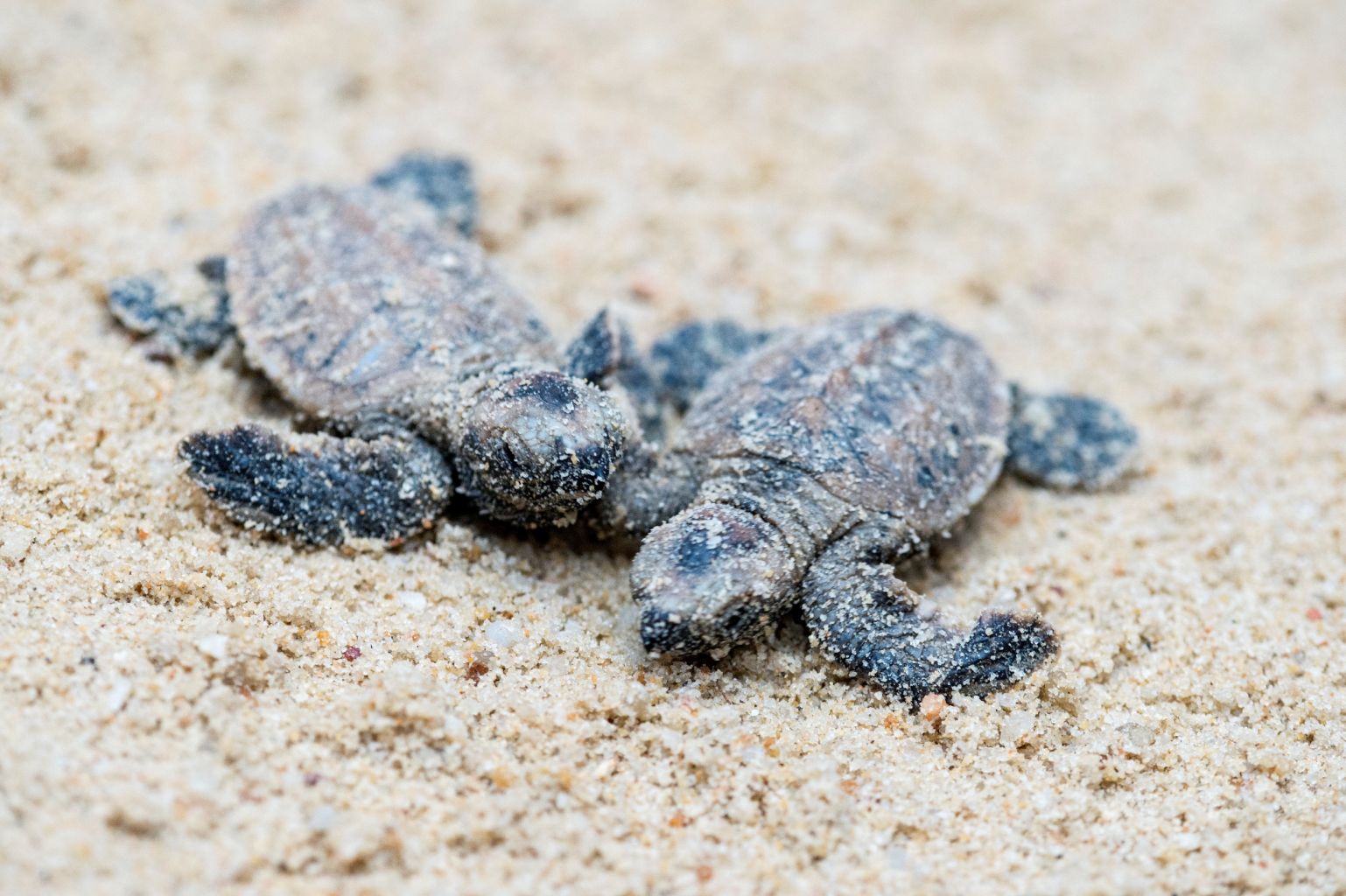106 critically endangered hawksbill turtles hatch on Sentosa's Tanjong Beach
Sign up now: Get ST's newsletters delivered to your inbox

The hatchlings made their way into the waters at Sentosa's Tanjong Beach.
PHOTO: SENTOSA DEVELOPMENT CORPORATION
Follow topic:
SINGAPORE - What's tiny, green, covered in sand and Singapore's latest celebration of wildlife?
Over 100 hawksbill turtles - which emerged out of eggs buried at a Sentosa beach on Friday morning (Jan 19), adding to the population of these critically-endangered reptiles.
The 106 hatchlings made their way into the waters at Sentosa's Tanjong Beach in what is the third time hawksbill turtles have hatched here since August.
Officers from the National Parks Board (NParks) took measurements and carried out checks on the baby turtles before they were released into the sea, said Sentosa Development Corporation, which manages the island.
The turtle nest was first spotted by a beachgoer on Nov 10 last year. There have been two other sightings in Sentosa, in 2010 and 1996.
A barrier was built around the nest to keep the eggs safe from natural predators such as monitor lizards and crabs, and reduce potential disturbance during the incubation period, the Sentosa spokesman told The Straits Times.
"As the hawksbill turtle is a critically endangered species, Sentosa Development Corporation... performed daily checks on the nest after the discovery," he said.
Hawksbill turtles grow to about 1.1m in terms of shell length and weigh about 68kg. Their name comes from tapering heads ending in a sharp point which resembles a beak.
This is the third batch of turtle hatchlings to emerge from Singapore's beaches since last August. Two other clutches of hawksbill turtle eggs were found in East Coast Park and these hatched in August and November last year.
Said turtle ecologist Rushan Abdul Rahman, 28: "It is not unusual to find turtles nesting on sandy beaches in the tropics, although some people may be surprised to know that this phenomenon takes place in urban Singapore too."
But he added that much of turtle nesting habits in Singapore remained unknown, such as whether hawksbill turtles return to the same exact location every time they return to nest, and how often they make nesting migrations.
Mr Rushan said that other studies have shown that some loggerhead turtle populations are happy to nest within a 100km range, whereas green turtles off Brazil's Ascension Island are much fussier about where they nest.
A Marine Turtle Working Group - comprising staff from NParks, academics from institutions such as the National University of Singapore, and interest groups and individuals - was re-established in 2016 to learn more about Singapore's native turtles.
If a turtle is spotted, people should keep their distance and speak softly, say experts. Touching the creature may scare or provoke it. People should also not handle the eggs as this might damage them.
Members of the public can call the Sentosa hotline on 1800-SENTOSA (7368672) if they spot a turtle nest on the resort island, and NParks on 1800-471-7300 if turtles are spotted at other parts of Singapore.

